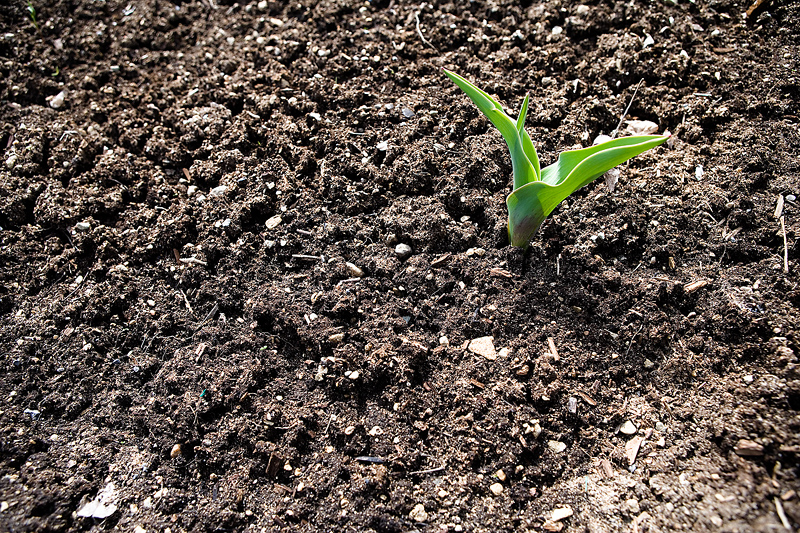Corn Nitrogen Rate Recommendations: AGR-1 Updates
Corn Nitrogen Rate Recommendations: AGR-1 Updates

Corn fertilizer nitrogen (N) rate recommendations had not been deeply reexamined in 20 years. Additionally, there have been no substantial change to AGR-1 (Ritchey and McGrath, 2020) corn N management recommendations since the 2004-2005 version of the document. Information on the use of urease inhibitors was added at that time. Other N management recommendations last changed in the 2002-2003 edition, when text supporting use of management alternatives to surface urea application after May 1 were added. This does not mean that research results regarding corn N rate recommendations have not been considered. These evaluations did not find enough evidence supporting a change. Corn producers and extension personnel have voiced concern that current corn N rate and management recommendations were not sufficiently modern/nuanced, considering more of the N management practices available to corn producers.
In response to a ‘data call’, 174 grain yield N response data sets/entries, from the 2013 to 2023 production seasons, were submitted by UK Plant and Soil Science faculty. Each entry consisted of two or more N rates and the same number of yield values and was accompanied by meta-data that permitted ‘binning’ of the data. Bins permit comparisons guided by existing AGR-1 N rate recommendations, but additional interesting comparisons were also made. Bins were related to soil drainage; tillage; previous crop; a cereal rye cover crop; manure use; irrigation use; N timing; N placement of the largest N fraction; N loss inhibitor use with the largest N fraction; and location (grower farm vs. research farm). Several of the bins were insufficiently populated and unable to support meta-analysis.
For 152 of the entries there were sufficient N rates, 3 or more, to calculate a corn yield versus N production function. The quadratic-plateau function was favored, but some entries required linear-plateau, quadratic or linear functions. The production functions were used to determine the parameters that were binned: the maximum yield (YAONR), the corresponding agronomic optimum N rate (AONR), the maximum economic yield (YEONR), and the corresponding economic optimum yield (EONR). To find YEONR and EONR, a N to corn price ratio of 0.1 (ex. $0.50/lb N:$5.00/bu corn) was assumed. The AONR, YAONR, EONR and YEONR values were subjected to the binning meta-analysis.
Cumulative frequency distributions were developed to visualize the parameter bin populations. These distributions are determined by dividing 100% by the number of observations for a given parameter and then plotting the cumulative frequency percentage (y-axis) as a function of the parameter value (lowest to highest) on the x-axis. Figure 1 illustrates the cumulative frequency distributions for EONR (Fig. 1a) or YEONR (Fig. 1b) values, depending upon whether a winter cereal cover crop (usually rye) was present (n = 49) or not (n = 103) prior to corn planting. In general, there was a greater spread in EONR values (0 to 352 lb N/acre) than in YEONR values (87 to 286 bu/acre). The EONR populations were significantly different with median values of 155 and 193 lb N/acre in the absence and presence of the cover crop and reflecting that the respective distributions lie to the left (without cover crop) and the right (with cover crop) of the ‘All Data’ distribution of EONR values (Fig. 1a). The YEONR distributions were not significantly different, with median values of 201 and 207 bu/acre in the absence and presence of the cover crop, respectively (Fig. 1b).
Figure 2 illustrates the impact of previous grain crop on EONR and YEONR value distributions. Where corn was the previous crop (n = 49 entries), the EONR distribution shifted to the right and the median EONR was higher, 186 lb N/acre, than when either soybean (n = 90 entries) or wheat/double crop soybean (n = 11 entries) was grown previously. With the latter two previous crops, distributions shifted to the left and median EONR was lower, 161 lb N/acre (Fig. 2a). The YEONR distributions shifted in the opposite direction; corn after corn yields were lower, mean of 199 bu/acre, and corn after soybean or wheat/double crop soybean yields were higher, mean of 219 bu/acre (Fig. 2b). In this comparison, YEONR differences due to previous crop were greater at the high yield end of the YEONR distribution, indicating greater positive impact of crop rotation in high yield environments (Fig. 2b).
Figure 3 illustrates the impact of N loss inhibitor (usually a urease inhibitor) use on EONR and YEONR value distributions. The YEONR values were similar across the distribution and averaged 201 bu/acre where no inhibitor was used (n = 97 entries), and 207 bu/acre where an inhibitor was present (n = 55 entries). The EONR value distributions were not similar, pulling away from each other when the situation required more N nutrition (at higher EONR values). In these cases, the use of the inhibitor reduced EONR values even more.
The previous corn N rate recommendations (Figure 4) were binned according to previous crop, tillage and soil drainage class. There were three previous crop categories (corn was lumped with the other grain crops), tillage differences were established according to the degree of residue cover, and soil drainage classes did not include the somewhat poorly drained class. Other N rate influencing factors were in footnotes and text that accompanied the table in Figure 4.
The new recommendations are in two tables (Figure 5) separate corn/sorghum from other prior grown grain crops, simplify “Tillage” as no-till versus any tillage prior to planting, and split the four soil drainage classes into two bins. Table 12a assumes no inhibitor or rye cover crop use. Table 12b clarifies the impact of those two practices on the recommended corn fertilizer N rate.
Compared to the prior recommendations, some bin categories declined (e.g., soil drainage classes dropped from 3 to 2), and certain bin categories increased (e.g., previous crop categories rose from 3 to 4). New bin categories/scenarios were found to impact corn yield N response and resulted in new recommendations (e.g. without/with a cereal rye cover crop; without/with a N loss inhibitor). Current fertilizer N rate recommendations depend on the given scenario and are given as an N rate range. The new recommendations generally compress the recommended range relative to the old recommendations, usually by raising the low end of the range without greatly increasing the high end of that same range.
There are some additional needs, going forward. In the newer data, different tillage practices resulted in less difference in EONR values, but there were fewer experiments where the soil was tilled. Irrigation resulted in higher yields, but in the few irrigated studies that were done there was little need for additional N relative to the mean EONR for rainfed corn grown under otherwise similar conditions. The existing fertilizer N rate recommendation will be continued, but again, more irrigated study data are needed.
There was only a small reduction in the total EONR rate (12 lb N/acre) with delaying two-thirds or more of that total fertilizer N rate at least four weeks after planting. However, most of the new data were generated on moderately well and well drained soils. The current delayed fertilizer N rate recommendation was primarily intended for somewhat poorly and poorly drained soils and will remain as is. There were no trials where corn was grown after a forage crop. There is often a wide range in corn planting dates within a given planting season, but there was no study that looked at the corn yield N rate response as a function of planting date, or at the corn response to delayed N timing as a function planting date.
Though there have been some increases in the recommended corn fertilizer N rates (most notably in the presence of a winter cereal rye cover crop and where corn follows corn) the data indicate that continuing improvements in crop and N management practices have increased N use efficiency quite significantly. A lot of the reported studies exhibited apparent fertilizer N use efficiencies between 0.7 and 0.8 lb N/bu – 155 to 175 lb N/acre produced yields around 220 bu/acre. The mean YEONR yield values found in these studies and used to develop these fertilizer N rate recommendations are well above current state-average yields. The ongoing yield trend with time indicates that corn N research needs to be revisited every 5 to 10 years with the objective of evaluating these corn N rate and management recommendations.
Ritchey, E., and J. McGrath. 2020. 2020-2021 Lime and Nutrient Recommendations, AGR-1. Univ. Kentucky Coop. Extn. Svc., Lexington, KY.
Citation: Grove J., Ritchey E., 2025. Corn Nitrogen Rate Recommendations: AGR-1Updates. Kentucky Field Crops News, Vol 1, Issue 3. University of Kentucky, March 14, 2025

Dr. John Grove, UK Soils Research & Extension
(859) 568-1301 jgrove@uky.edu

Dr. Edwin Ritchey, UK Extension Soil Specialist
(859) 562-1331 edwin.ritchey@uky.edu
Nutrient Recommendations
